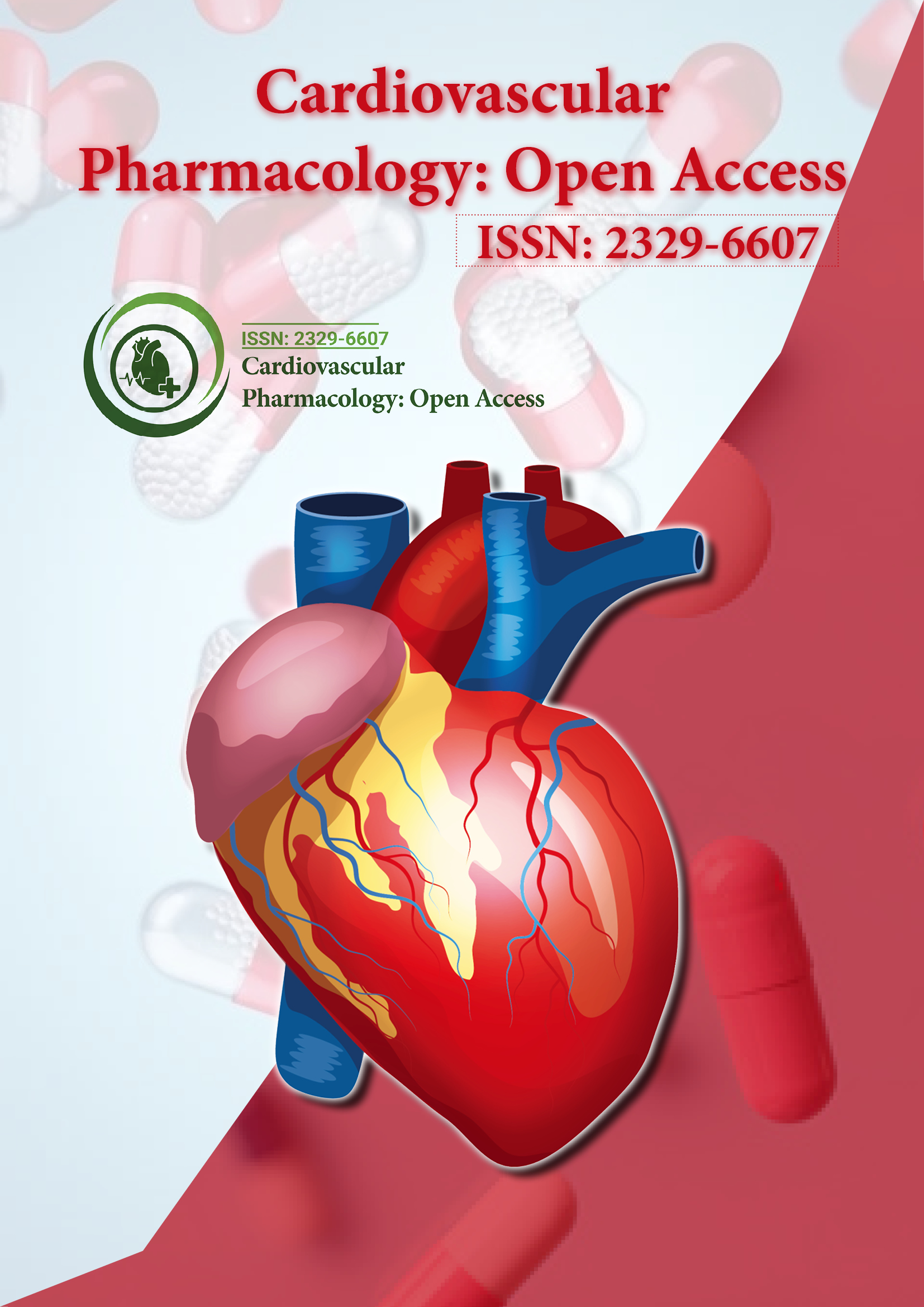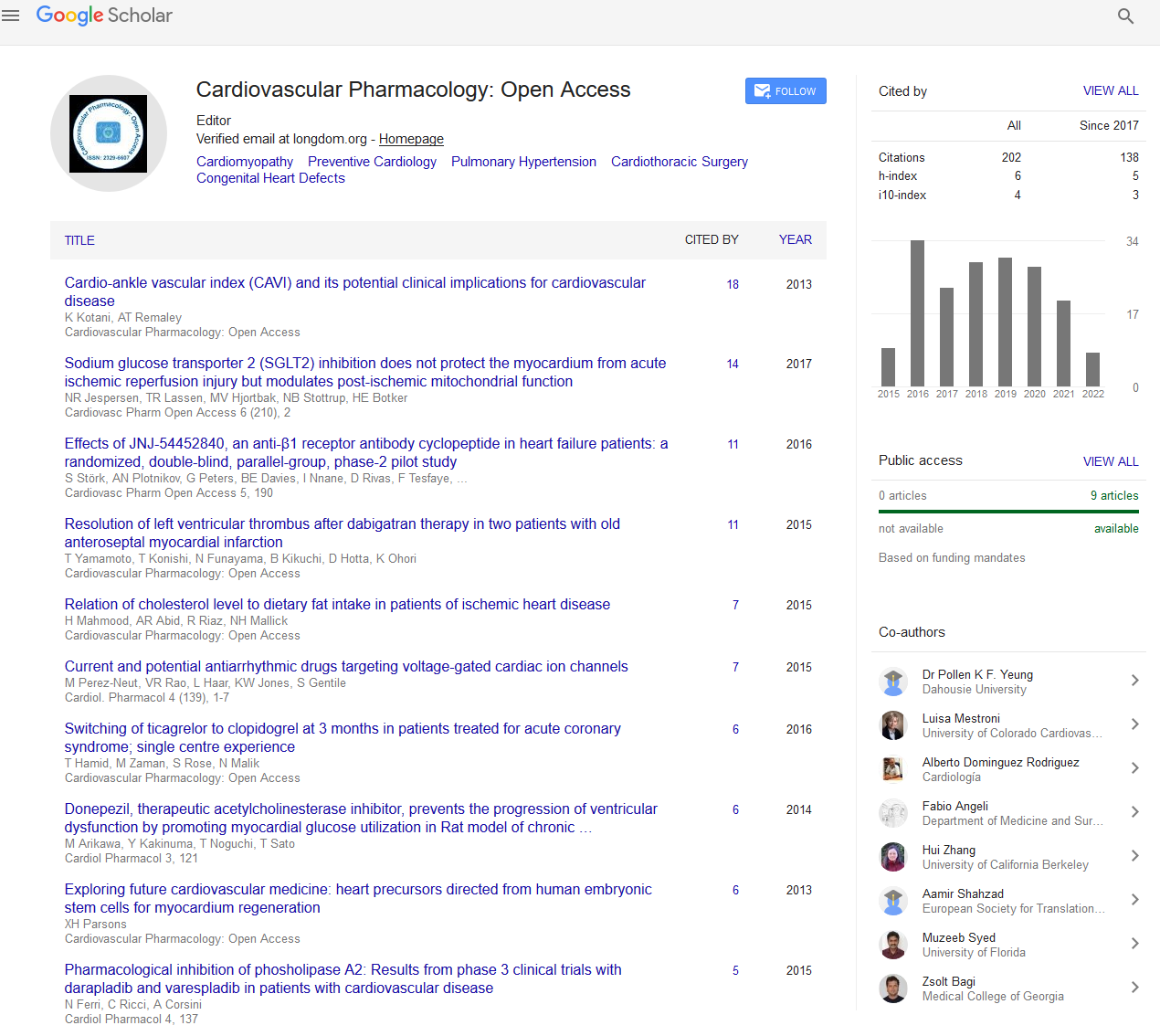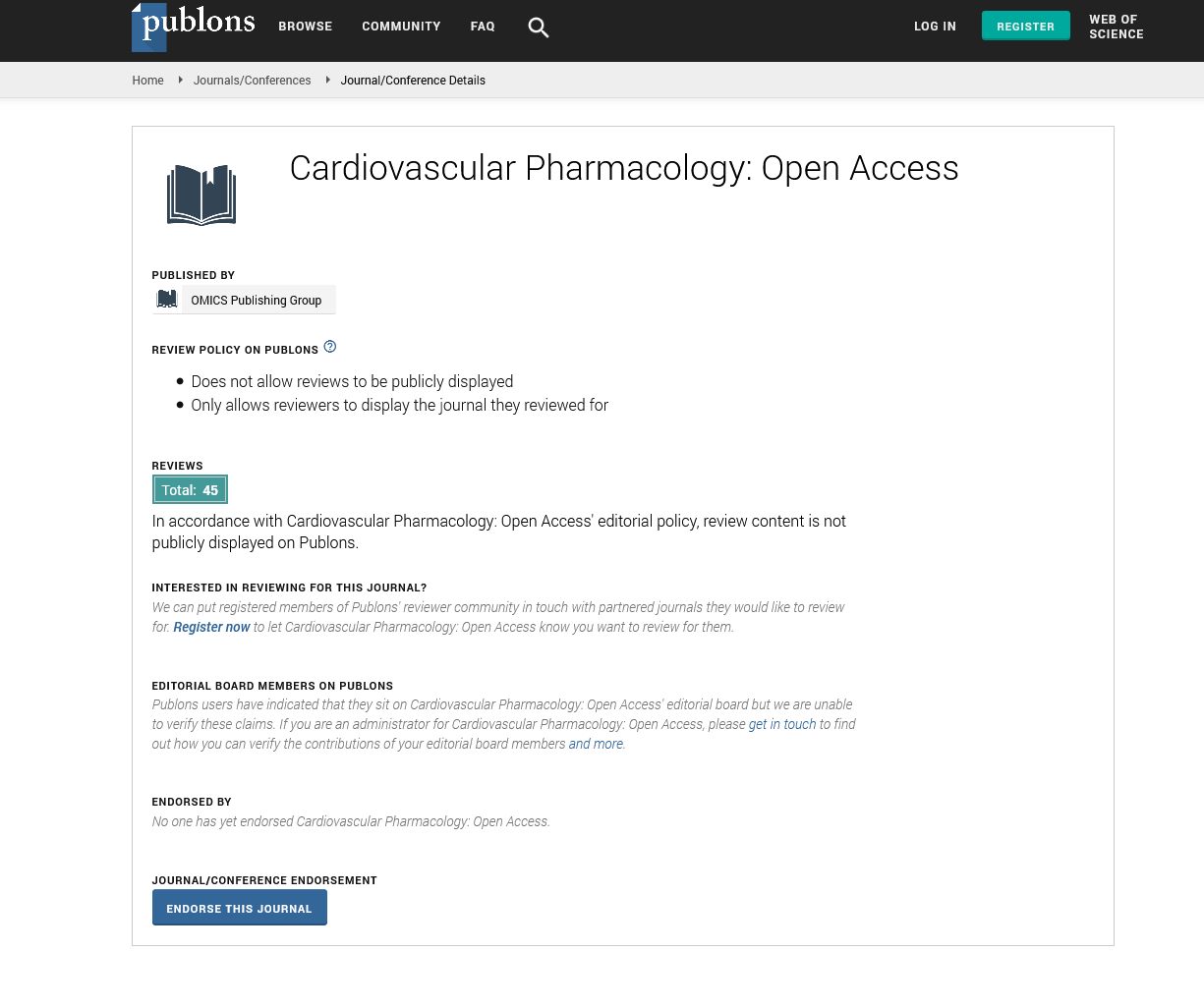Indexed In
- Open J Gate
- Cosmos IF
- RefSeek
- Hamdard University
- EBSCO A-Z
- OCLC- WorldCat
- Publons
- Geneva Foundation for Medical Education and Research
- Euro Pub
- Google Scholar
Useful Links
Share This Page
Journal Flyer

Open Access Journals
- Agri and Aquaculture
- Biochemistry
- Bioinformatics & Systems Biology
- Business & Management
- Chemistry
- Clinical Sciences
- Engineering
- Food & Nutrition
- General Science
- Genetics & Molecular Biology
- Immunology & Microbiology
- Medical Sciences
- Neuroscience & Psychology
- Nursing & Health Care
- Pharmaceutical Sciences
Opinion Article - (2024) Volume 13, Issue 3
Long QT Syndrome: Genetics, Treatments and Patient-Centered Care
Olivia Ndlovu*Received: 30-Aug-2024, Manuscript No. CPO-24-27839; Editor assigned: 02-Sep-2024, Pre QC No. CPO-24-27839 (PQ); Reviewed: 16-Sep-2024, QC No. CPO-24-27839; Revised: 23-Dec-2024, Manuscript No. CPO-24-27839 (R); Published: 30-Sep-2024, DOI: 10.35248/2329-6607.24.13.408
Description
Long QT Syndrome (LQTS) is a potentially life-threatening cardiac arrhythmia characterized by the prolongation of the QT interval on the Electrocardiogram (ECG). This prolonged interval increases the risk of dangerous arrhythmias, such as torsades de pointes, which can result in sudden cardiac death if left untreated. Understanding LQTS has evolved over time, with significant contributions from fundamental medical researchers who have advanced both the diagnosis and treatment of this complex syndrome. In this article, we will discuss the historical context of LQTS, examine the current pharmacological and non-pharmacological treatments and discuss the advantages and limitations of available management strategies.
Historically, the identification of Long QT Syndrome dates back to the mid-20th century when researchers first noted the connection between QT interval prolongation and sudden cardiac events. Over the years, LQTS has been categorized into several types based on genetic mutations, including LQT1, LQT2 and LQT3, with each type having distinct clinical features and responses to treatment. Understanding these genetic underpinnings has been essential in advancing targeted therapies and improving outcomes for patients.
The pharmacological management of LQTS has emerged as the foundation of treatment. Beta-blockers, particularly propranolol, are widely used to reduce the frequency of syncope (fainting episodes) and prevent potentially fatal ventricular arrhythmias. This class of drugs has been shown to be particularly effective in patients with congenital LQT1, reducing the risk of sudden cardiac death by inhibiting the effects of stress-induced arrhythmias. However, the response to beta-blockers can vary and patients with LQT2 often experience less favorable outcomes. This variability underscores the importance of personalized treatment based on the specific type of LQTS and individual patient characteristics.
Despite their proven effectiveness, beta-blockers come with certain challenges. Adherence to treatment can be an issue due to side effects, which may range from fatigue to more serious concerns such as bradycardia. In some cases, the potential side effects of drug therapy may outweigh its benefits, leading to difficult decisions regarding alternative treatments. Moreover, the use of beta-blockers in certain high-risk patient populations such as those with other comorbid conditions-requires careful monitoring.
In addition to pharmacological treatments, lifestyle modifications play an important role in managing LQTS. Patients are advised to avoid known risk factors such as extreme emotional stress, intense physical exertion and certain medications that may further prolong the QT interval. Patient education programs have proven beneficial in promoting adherence to lifestyle changes, including stress management techniques and avoidance of high-risk activities. However, managing the psychological and social aspects of living with LQTS can be challenging, especially for younger patients. These individuals may struggle with social situations, leading to feelings of isolation or anxiety. Furthermore, mental health disorders such as schizophrenia and depression are more common among those with LQTS, creating an additional layer of complexity in treatment management and overall quality of life.
For patients with high-risk LQTS, particularly those who experience severe arrhythmias despite pharmacological treatment, device therapy has become an essential treatment option. The Implantable Cardioverter-Defibrillator (ICD) has proven to be a life-saving intervention, significantly reducing mortality rates and improving survival, especially in patients with LQT3 or those who have experienced previous cardiac arrest. While ICDs offer substantial benefits in preventing sudden cardiac death, they are not without their challenges. The psychological burden of living with an ICD, concerns about potential inappropriate shocks and the risks associated with implantation surgery can significantly affect a patient’s wellbeing. Furthermore, the need for ongoing follow-up and management of the device can create logistical and emotional burdens for patients.
In conclusion, Long QT Syndrome is a multifaceted condition that presents significant challenges in both its diagnosis and management. Advances in genetics and pharmacology have led to more effective treatment options, but these therapies are not without their drawbacks. Pharmacological interventions, particularly beta-blockers, remain central to treatment, but their efficacy can vary depending on the subtype of LQTS. Lifestyle modifications, while important, can be psychologically demanding, particularly for younger patients. Device therapy, including ICDs, offers life-saving potential for high-risk patients, but it also comes with significant psychological and physical risks. A balanced approach that integrates both effective medical treatments and a strong focus on patient quality of life is essential to the optimal management of Long QT Syndrome. Ongoing research into personalized therapies, including geneticbased treatments and improvements in device technology, holds potential for better outcomes in the future.
Citation: Ndlovu O (2024). Long QT Syndrome: Genetics, Treatments and Patient-Centered Care. Cardiovasc Pharm. 13:408.
Copyright: © 2024 Ndlovu O. This is an open access article distributed under the terms of the Creative Commons Attribution License, which permits unrestricted use, distribution and reproduction in any medium, provided the original author and source are credited.


